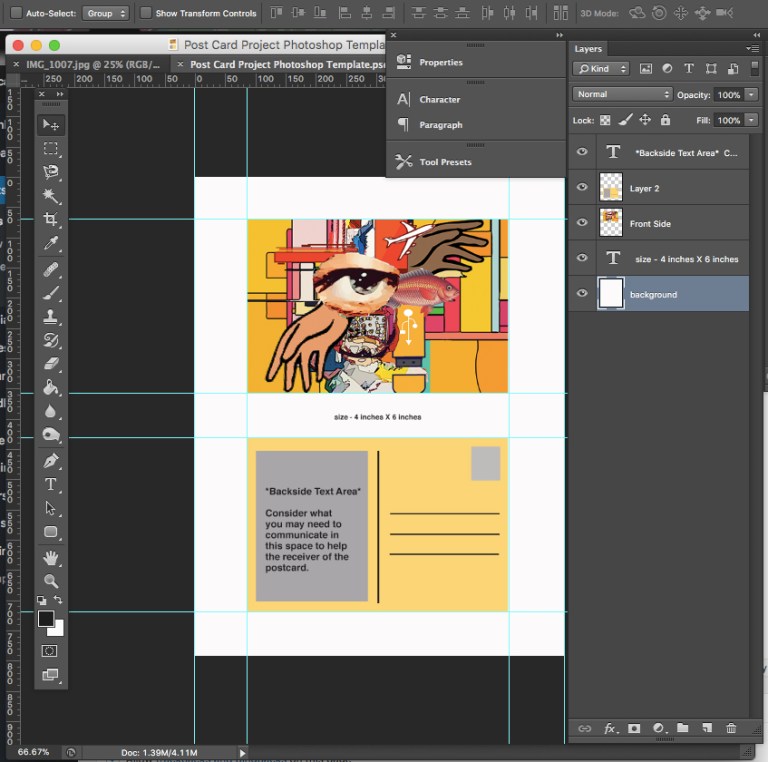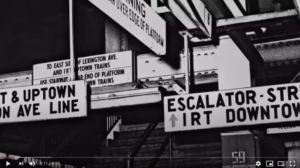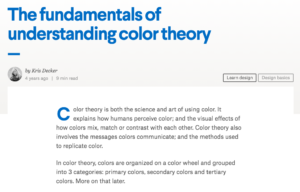Hey Hey, Welcome back to MMA100 Weeks #6 & 7!
**I will begin a series of Illustrator demonstrations that will be recorded on 3/17 and placed here after class – See below for an intro to Illustrator**
Passcode: .7CYcP?7
Here is this week’s useful information and class resources: Please keep in mind, there is a lot to see here below, take your time through out each week to explore what is below, if you have any questions or reactions please add them to the comments section.
*Did you miss the post from Weeks #4 &5 – go Here!
Lets jump back in and start with some NYC Design History!! Behold, the NYC Transit Authority Graphics Standards Manual. See below
Inspiration – The NYC Transit Authority Graphics Standard Manual
The link above will you take you to a page with an active full PDF version of the manual. I would like for EVERYONE to leave a comment at the bottom of this page after exploring the manual and answering the questions below (you can work on this outside of class over this week or next)
Designed by Massimo Vignelli and Bob Noorda, Unimark, 1970
I would love to hear your reactions and feedback in the comments section below!
**after you “post” your comment I will have to manually approve it – you may not see it show up right away. No need to post the comment twice
Some Questions to ponder and react to:
- What is your general feedback on the manual? Do you like it? Dislike it? Please Explain. Do you find it to be well designed, illustrated and clear in its application?
2. The manual was published in 1970. Does it still hold up for today’s world?
3. What is missing or should be added for today’s world of NYC Transit?
4. What additional questions are you left with?
Link to the video above – https://www.youtube.com/watch?v=Qg03z1H6cfA
Imagine being offered the opportunity to visually solve, design and illustrate the entire NYC transit system!? What goes into this process and research? Do you know who is responsible for this? How much does the designer charge for a project of such scale? Lets dig in and discuss.

Last week we continued talking about Assignment #2 – The Post Card project ! Lets talk about some work in progress and the potentials of the project. Students will share their work via Zoom. Discussions about presentation methods and why presentation is so important. Please navigate to the assignment #2 page to view the assignment details with me again.
Tonight’s Video tutorial will be for trouble shooting photoshop questions and issues, bring your questions!
Color Theory!
Adobe’s awesome Color Wheel Simulator (must see)
Several up and coming assignments will surely benefit from the use of understanding Color Theory and the Adobe Color Wheel!
*Above – Color Theory Continued -> GREAT RESOURCE – Must Read
*Above – Color Theory Continued -II >https://99designs.com/blog/tips/the-7-step-guide-to-understanding-color-theory/
Let’s Talk about Adobe Illustrator!
Its time to take a class tour of Illustrator and get talking about Assignment #3
*only move onto to assignment #3 when assignments &1 & 2 have been completed and submitted to google drive.*
**I will begin a series of Illustrator demonstrations that will be recorded on 3/17 and placed here after class – See below for an intro to Illustrator**
Passcode: .7CYcP?7
You can also take an additional tour with Adobe Wizard – Terry White
10 Things Beginners Want To Know How To Do with Adobe Illustrator (subscribe to Terry’s Channel!)
Adobe has a great series of videos on their channel on YouTube:
Check this series with a focus on Illustrator
https://www.youtube.com/c/AdobeCreativeCloud/search?query=illustrator
Designer Inspiration :: You need to know Paul Rand








1.What is your general feedback on the manual? Do you like it? Dislike it? Please Explain. Do you find it to be well designed, illustrated, and clear in its application?
I like these manuals. These are clean, easy to read, and they remind me this is New York City. Iconic!
2. The manual was published in 1970. Does it still hold up for today’s world?
It is hard to question, but I would say that they can keep this manual. I am surprised that it has not changed 50 years, but I really love these fonts and designs. Every station changed fonts, colors, and designs in my country because of Tokyo Olympic 2020, and they added some language for tourists. It is a good thing, and tourists can go everywhere easily, but at the same time, I felt sad a little bit because I felt that it disappear Japanese retro style. That is why I do not want to change a lot about NYC’s manuals to keep NYC’s cool iconic.
3. What is missing or should be added for today’s world of NYC Transit?
I do not think that NYC transit is missing anything. We can search on our phone, and we can ask. They can add languages for tourists, but I do not think it is super necessary.
Excellent! Thanks so much!
I love that manual!
The fact that this is a design from the 70s proves that it is timeless, and relevant to today.
I love the clean, simple, and clear design that contributes to the understanding of any Subway user even if this is the first time.
I love the colors selected for each train line. Beyond the aesthetics, the colors help understand the ruling of trains to different areas.
As a Subway user, I would recommend upgrading signs in electronic screens.
The railroads often vary on weekends, so go out by a railway that comes to a certain station in the middle of the week, will not pass in the same station on weekends.
Therefore, since nothing is constant, I would change the determined signage at the screens to display each day the line that is supposed to reach the station.
Personally, I went to a certain station I thought the train was supposed to arrive at because the signing at the entrance showed the train I need, but when I reached the station itself I found that the train would not pass at that stop even though the sign showed differently.
Wonderful! Thank you!
It’s fascinating to see that all of the signs and directions I’ve followed while learning the NYC subway system have stood the test of time for decades. I have only actually lived in New York for a few years, so I haven’t familiarized myself with the subway completely, but the ones I had come across were clearly directed. The attention to detail and thoughtful decisions displayed in the manual show that this is clearly a standard that was meant to last. I honestly can’t even think of any way to improve the signs.
Excellent!
Its a tough question to address… Im still thinking about it!
1.What is your general feedback on the manual? Do you like it? Dislike it? Please Explain. Do you find it to be well designed, illustrated, and clear in its application?
Ans: I think this manual’s illustration is very detailed, clear, and organized for the viewers. This is my first time reading a manual of this sort, and it’s very intriguing and clear for me. It gave me inspiration and also, only after being able to view it that I realized how much planning and work is involved in setting up a system that works for every individual. It made me want to pay attention to these signs even more if I get back to New York.
2. The manual was published in 1970. Does it still hold up for today’s world?
Ans: When I was in New York, I believe I saw most identification, directional, and information signs when I used the subway. They were all very clear to identify for foreigners and very helpful. Therefore, I’d say this system still works as fine as it did in the 1900s.
3. What is missing or should be added for today’s world of NYC Transit?
Ans: From what I remember, I did not find anything lacking when it came to signs. If people who are unfamiliar with the NYC Transit can follow pretty well, I believe it is doing its job well.
Great work! Thanks so much!
This is a dope manual! It really cool to see how the the design of how the subway system has changed over the years. Everything in the manual is very clear in detail especially the colors for the train lines because it helps us know what train you can take to get to your destination. The signs have changed a lot too from the font to having the colors of the sign inverted that we see today. Another thing that caught my eye is the turnstiles they looked so small back then to more a gated style.
This manual does hope up for the world today. It should be placed in that transit museum for people to learn how the design of how subways looked like in the 20th century.
I don’t think anything is missing or needs to be added to today’s subway world. Everything is going digital already and the metrocard is being phased out soon and now we have to tap with a credit card or phone to enter. Now we have giant screens in the middle of the platfrom or on the wall for info, ads and etc.
Great work on this! So true!